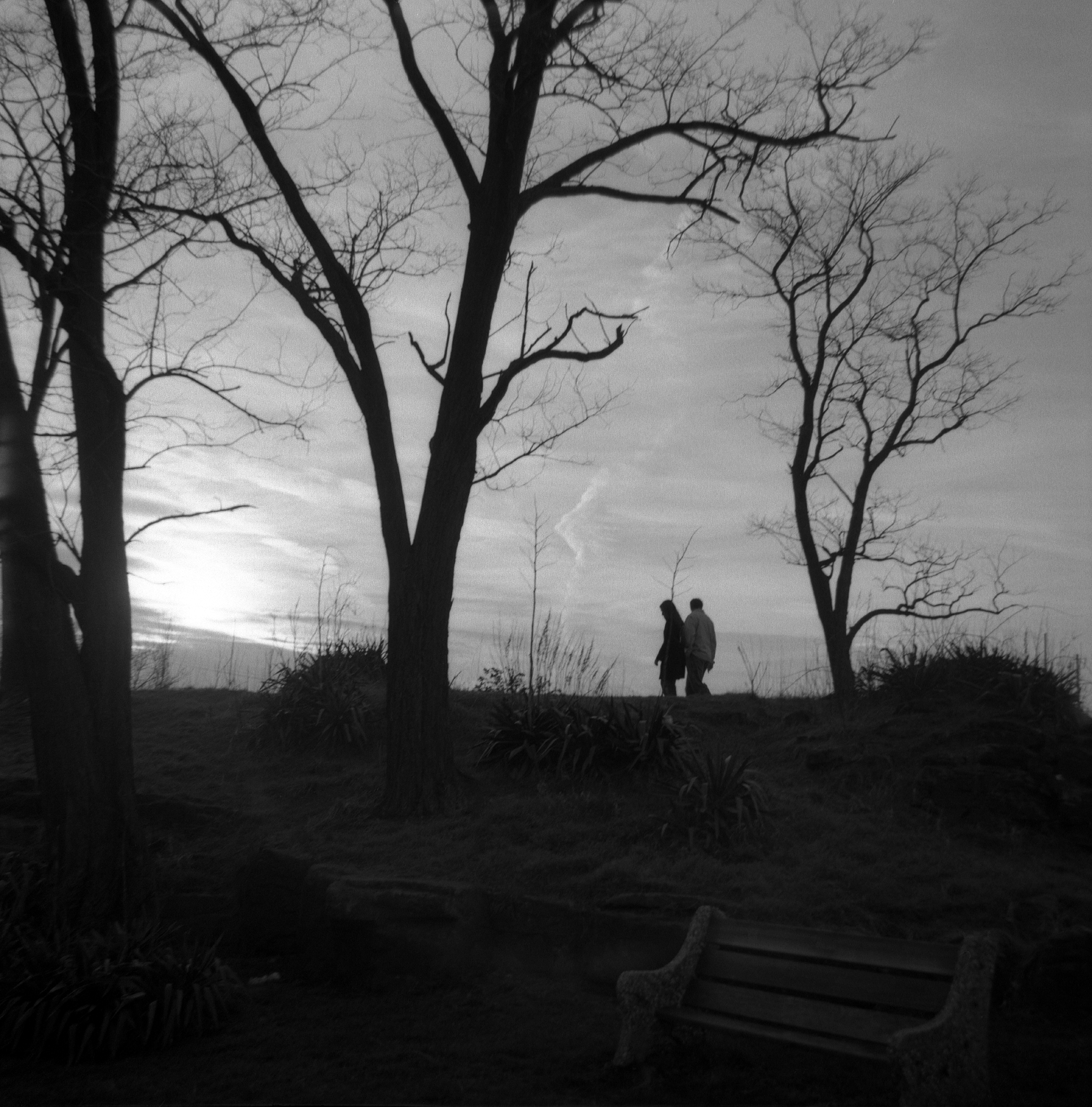They breathe deeply and put their hot hands on me. I lie on their padded massage table, on their soft sheets. Light slants across the room and into the kitchen, illuminating the place where my seventeen-year-old dog lies on his bed, unable to move without human hands to hoist his hind end up, a human voice to encourage him on his journey into the leaf-covered yard. My friends, gifted Reiki practitioners, arrange and prop my limbs and head on the pillows and begin with my feet. It feels as if an electric current jumps from their hands and goes straight up to my hip, where I rub and say, “Right there.” They say that they know, “because the energy really pulls there.” Then their eyes follow mine and come to rest on those big brown eyes, looking up at us from the kitchen floor. One of them says: “You can’t channel his pain into your body, you know.” And I wonder, Am I doing that?
A week later my son hears the sadness in my voice on the phone, and he arrives at the back door with two bags of groceries. He pulls out a bone from the butcher, strips away the white paper, and waves it in front of the dog. “Hey, puppy!” he says. Making a liar out of me, the dog gets up, takes the bone in his mouth, and sets out with purpose for the woods. My son and I look in astonishment at each other, as if a miracle has taken place in our kitchen.
“It’s you,” I tell my son. “He sees you and thinks he’s a pup.”
We follow the dog down to the bottom of the hill, where he buries the bone before his legs collapse beneath him once more, and we have to carry him back up to the house.
“It’s a miracle,” I say, as we sit with the dog on his bed near the fireplace. “He hasn’t been that mobile in weeks.”
And my son says, “No, Mom, it’s not a miracle, just some primal instinct.”
The dog’s condition worsens. He stops eating and just looks up into our eyes when we offer him dog biscuits. We know the time has come to let him go, so we ask our veterinarian friend to help us. We bury him with great ceremony under the old-growth redwood in the vineyard. One of my son’s professors has taught him about Native American burial rituals, and my son wants us to incorporate what he’s learned by sending the dog off with something we love. We wrap the body in precious cloth: my first weaving; my husband’s old flannel shirt that he has always worn on our backpacking trips; the jersey my son wore his senior year at Berkeley in the big game against Stanford.
For many nights afterward, my husband and I sit on a wooden bench by the grave, watching the sunset and drinking wine under enormous, sweeping boughs. It’s so quiet you can hear the sound of owls arriving, their wings cutting through the air. They hoot to each other and sit on the branches above the grave, and it’s easy for me to imagine that the animals know.
“Look, over there: a coyote,” my husband says, and I tell him about my feeling that the animals gather to keep our dog company at night. I believe we are in agreement on this as the stars come out.
One moonless night that week I’m driving home through the meadow when a huge white owl appears, hovering just inches above the hood of my car, leading me. The bird doesn’t look real; its wings seem to hug the windshield, and I think it’s a sign from my dog: that he’s learned to fly in the afterlife; that he’s really OK; that he’s not angry with us for having ended his suffering. Breathlessly I tell my husband about it when I get home, offering him this gem of a story.
He says, “It was probably just looking for bugs in your headlights,” and asks me about my day.
This is a day that I found something unusual during a patient’s ultrasound exam. After doing diagnostic ultrasounds for so many years, looking into people’s bodies and listening to their stories, I figured I’d seen and heard it all. But she was different. They’d warned me about her, calling her a “street person,” a “nut case.” She seemed lucid and polite to me, though. When I inquired into her medical history, she said, “They took my kids, and it broke my heart. When the hospital released me, I felt such heartache. This morning I saw the sunrise — it was so beautiful, it was like someone was reaching in and squeezing my heart.”
My assignment was to perform an ultrasound scan on her ovaries, but instead I put a small amount of gel on the transducer and placed it just below her breastbone, and there it was: an enormous pericardial effusion — an excess of fluid in the sac surrounding the heart, her heart trapped in a bag of tears.
When I told the doctors that we should get her to the ER immediately, they asked, “Why were you looking at her heart?” How could I explain that it was just one woman’s grief recognizing another’s?





